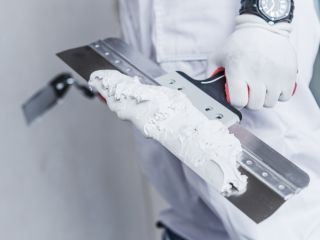
Understanding Joint Compound for Effective Drywall Installation
It is a crucial material in the drywall finishing process. It is a gypsum-based paste that serves multiple functions, including filling gaps, covering joints, and preparing surfaces for painting. Here’s a detailed look at what drywall mud is and its importance in construction and renovation.
What is Drywall Mud?
Drywall mud is primarily made from gypsum powder mixed with water, resulting in a smooth, paste-like substance. This compound is essential for achieving seamless walls and ceilings, as it helps to bond drywall sheets together and covers screws, seams, and joints. The application of drywall mud is often referred to as "mudding," which involves several steps to ensure a flawless finish.
Functions of Drywall Mud
- Sealing Joints: When drywall panels are installed, they are typically joined at the edges. Drywall mud fills these joints, creating a continuous surface that enhances both aesthetics and structural integrity.
- Hiding Imperfections: Mud is used to cover any imperfections, such as nail or screw holes, ensuring that the final surface is smooth and ready for painting or texturing.
- Binding Tape: During the finishing process, drywall tape is applied over the seams before the mud is added. The joint compound adheres to the tape, reinforcing the joint and preventing cracks.
Types of Drywall Mud
There are several types of drywall mud available, each suited for different applications:
- Premixed Joint Compound: This type comes ready to use out of the container. It is ideal for taping and finishing but may take longer to dry compared to other options.
- Setting Compounds: These are dry powders mixed with water that harden quickly. They are often used for initial coats because they dry faster and are less prone to shrinking.
- All-Purpose Mud: This versatile compound can be used for taping and finishing. It is easy to sand and provides a smooth surface for painting.
- Topping Compound: Designed for the final coat, topping compounds have less adhesive material, making them easier to feather out and sand.
The Mudding Process
The process of applying drywall mud typically involves several steps:
- Preparation: Ensure that all surfaces are clean and free of dust before applying any compound.
- First Coat (Taping): Apply a layer of joint compound over the seams where drywall sheets meet. Press drywall tape into the wet mud to secure it.
- Subsequent Coats: After the first coat dries, apply additional layers of mud to smooth out the surface. Each coat should be sanded lightly before applying the next.
- Finishing Touches: Once the final coat has dried, sand it down for a smooth finish before priming and painting.
Drywall mud plays an essential role in creating beautiful and durable walls and ceilings. Its ability to seal joints, hide imperfections, and provide structural support makes it an indispensable material in any drywall project. Whether you're a DIY enthusiast or hiring professionals, understanding drywall mud will help you achieve the best results in your home improvement endeavors.
Hot or Quick-Drying Mud
Hot mud is a powdered drywall compound packaged in a moisture-resistant bag. This type of mud initiates a chemical reaction upon contact with water, causing it to set quickly. It is essential to keep hot mud dry to prevent premature hardening, which would render it unusable.
Hot mud is available in various setting times—typically 20, 45, or 90 minutes—allowing contractors to select the appropriate type for their project needs. As it hardens, you will notice a color change from dark gray to white, indicating that it is dry. However, it can still be recoated while it’s hard if it hasn’t completely dried yet. The name "hot mud" refers to the heat released during the hardening process.
Pre-Mixed Drywall Compound
Pre-mixed drywall compound is the most common type used in construction. As the name suggests, it comes ready to use in buckets or boxes, saving time and effort during application. Pre-mixed mud may need to be thinned with water, depending on the application—thinner mixtures are preferred for tape bedding to ensure smooth flow, especially when using automatic taping tools.
This category of mud can be divided into three primary types:
- All-Purpose Mud: Versatile and suitable for various applications, including taping and finishing.
- Topping Compound: Designed for the final coat, providing a smooth finish.
- Lightweight All-Purpose Mud: Easier to handle and apply, making it ideal for larger projects.
While most compounds are compatible, it’s crucial to follow the manufacturer's instructions and avoid mixing different types unless specified.
Additional Considerations for Choosing Drywall Mud
- Humidity and Temperature: Always consider the environment in which you are working. High humidity can affect drying times and the performance of certain compounds.
- Application Method: Determine whether you will be using a hand tool or an automatic taping tool, as this can influence the type of mud you choose.
- Project Size: For larger projects, consider using lightweight compounds to reduce fatigue during application.
Conclusion
Selecting the right type of drywall mud is essential for achieving a professional finish in your drywall installation projects. Understanding the differences between hot mud and pre-mixed compounds will help you make informed decisions and ensure that your work stands the test of time.
If you need expert assistance with drywall installation or repairs, contact us at Drywall Repair La Cañada Flintridge today! Our team of skilled professionals is ready to provide you with high-quality drywall services tailored to your needs.
Don’t let drywall issues disrupt your home’s comfort and aesthetics! Reach out to our experienced team for a consultation or free estimate on your next drywall project.

